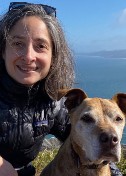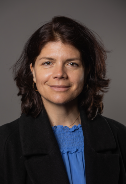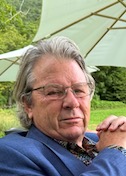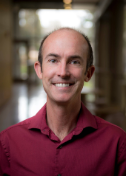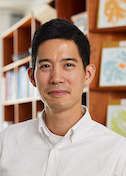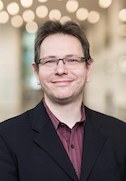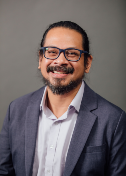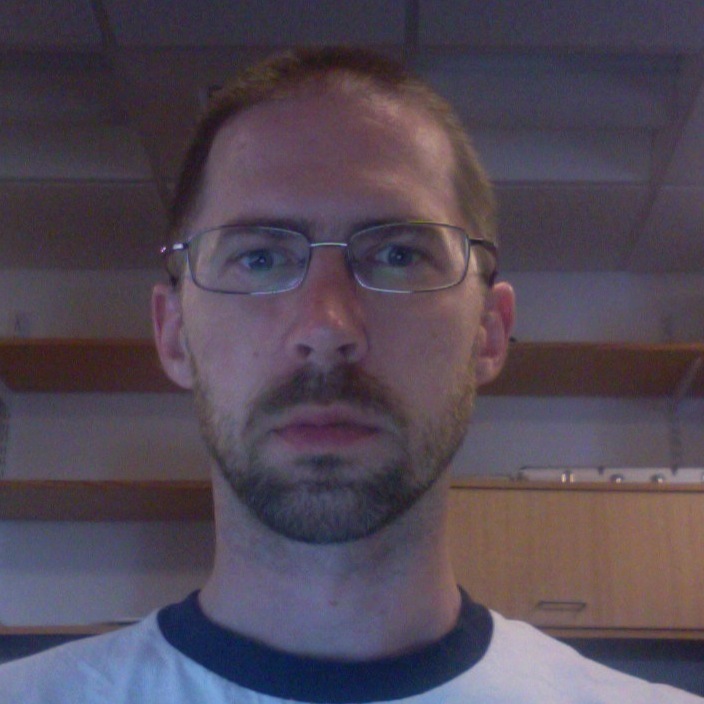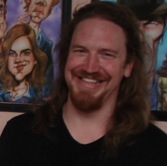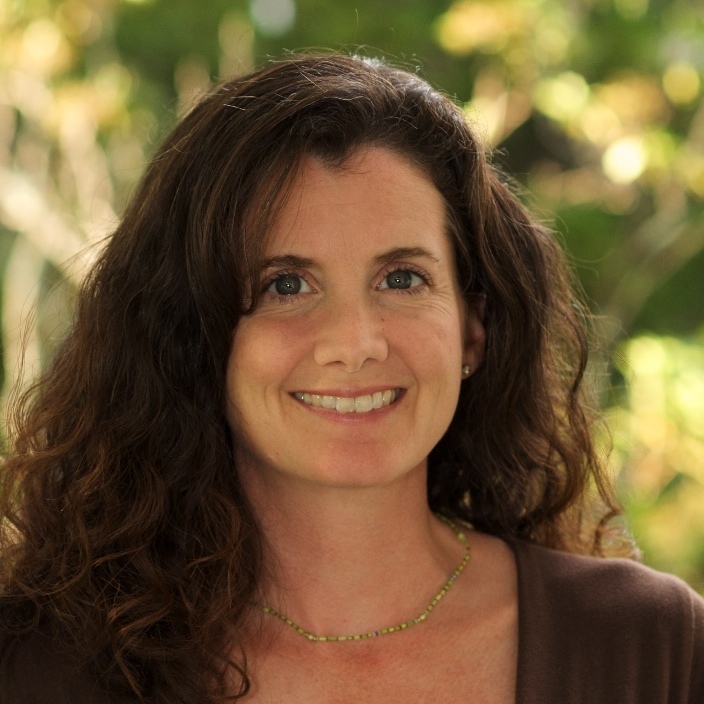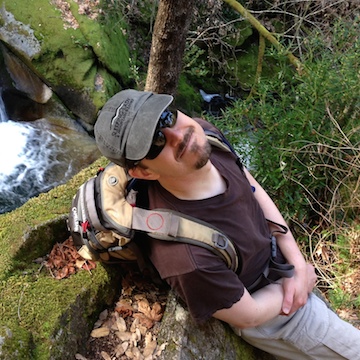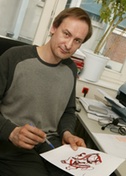Structure of Equity
Jamaine Davis
Meharry Medical College
Published September 28, 2022
Numbers speak clearly to Jamaine Davis. As a boy growing up on Long Island, math came so easy to him that one of his family nicknames was "the professor."
Other numbers have shaped his ambitions at Meharry Medical College in Nashville, Tennessee, where Davis runs one of the few labs in the world that uses structural biology to help explain biological health disparities.
For example, U.S. Black adults are twice as likely to have Alzheimer's disease compared to non-Hispanic Whites. And despite a somewhat lower overall lifetime risk of breast cancer, Black women experience a 40% higher death rate from breast cancer than White women at every age and are more likely to be diagnosed with fast growing and late-stage breast cancer.
"My research program is basically at the intersection of structural biology, genetics and disease, and health disparities," says Davis of the big-picture questions that guide his lab's work. "What are the molecular mechanisms that dictate who develops diseases like cancer or Alzheimer's? And then how do we design effective therapies? How do we target the right pathways for the right treatment for that patient?"
One project in the early stages focuses on a gene (ABACA7) that has a stronger effect on risk of Alzheimer's disease in Blacks than the better known ApoE4 gene risk variant. "It's actually the strongest risk factor for developing Alzheimer's in African Americans known so far," Davis says.
As he explains it, ABACA7 transports lipids out of cells, handing off the lipids directly to ApoE, and also interacts with Tau, another protein that goes awry in Alzheimer's. Two missense variants in ABACA7 confer the risk.
"So we've been studying these mutations to see what impact they have on lipid transport," Davis says. "Once we're done, we can look at the people who particularly carry this mutation or variant, see what downstream processes are altered, and design therapies to rescue that. And these variants so far have only been identified in African Americans."
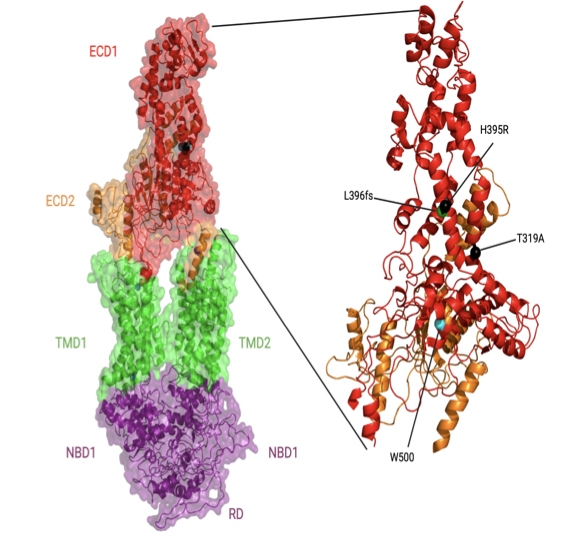
Davis began his academic training on a different career path. With his early affinity for math and science, he reasoned that chemical engineering made sense as a college major. But near graduation at Drexel University, he realized that the typical next step for someone with a chemical engineering degree was a job at an oil company. He hadn't taken one biology course in college, but he found himself drawn to biomedical research instead.
He seized an opportunity to work in a biophysics lab at a neighboring school, University of Pennsylvania, where his mentor Jacqueline Tanaka gave him a peek at the scientific career he could have in biophysics and opened his eyes to the kind of academic role model he could be. Her excitement for X-ray crystallography and for increasing the proportion of women and minorities in science inspired him to go to graduate school.
"She built her career in structural biology and mentoring, hand in hand," Davis says. "She saw some potential in me, and I was at a crossroads." Davis had also been unaware of the extent of health inequities across the country and of the low representation of minorities in academia.
For his thesis, Davis chose the lab of Harvey Rubin, a dynamic speaker who fostered an immediate interest in infectious disease. In Rubin's lab, Davis characterized an enzyme that enables Mycobacterium tuberculosis to enter (and possibly exit) the dormancy stage in the lungs of people.
When Davis finished his PhD in 2007, he was the first Black to earn a doctorate in biochemistry and molecular biophysics at UPenn. "I had a great time," he says. "They were very supportive. But it is pretty shocking. If you look at Twitter, there are other people posting the same kind of statistic. They're the first Black to graduate from a certain program at a certain institution. It does show there is still some under-representation across different departments."
He followed up with two postdoctoral fellowships at the National Cancer Institute. He first showed that a novel protein in Shigella (bacteria that cause food poisoning) was not a protease, as some suspected. A second project elucidated the binding modes of a protein with multiple domain repeats implicated in the development of cancer.
Then he thought about how best to combine his interests in a distinctive research program. He chose Meharry, one of the oldest and largest historically black U.S. academic health centers. (Davis is also a member of the Vanderbilt University Center for Structural Biology.)
Historically black colleges and universities are powerhouses in educating African Americans who go on to earn doctoral degrees in science, technology, engineering, math, and medicine, as Davis and his co-authors reviewed in a commentary (Cell, 2022). Blacks make up 12% of the U.S. workforce, but only 5% of working physicians and 3.6% of full-time faculty conducting research at medical schools.
When the COVID-19 pandemic hit, Davis found new opportunities for mentorship and community outreach. Soon after the pandemic took hold, a student-driven community formed on Twitter with the handle @BlackInBiophys and a logo designed by Taneisha Gillyard, a former postdoc in the Davis lab. Davis spoke at a virtual meeting held by the group.
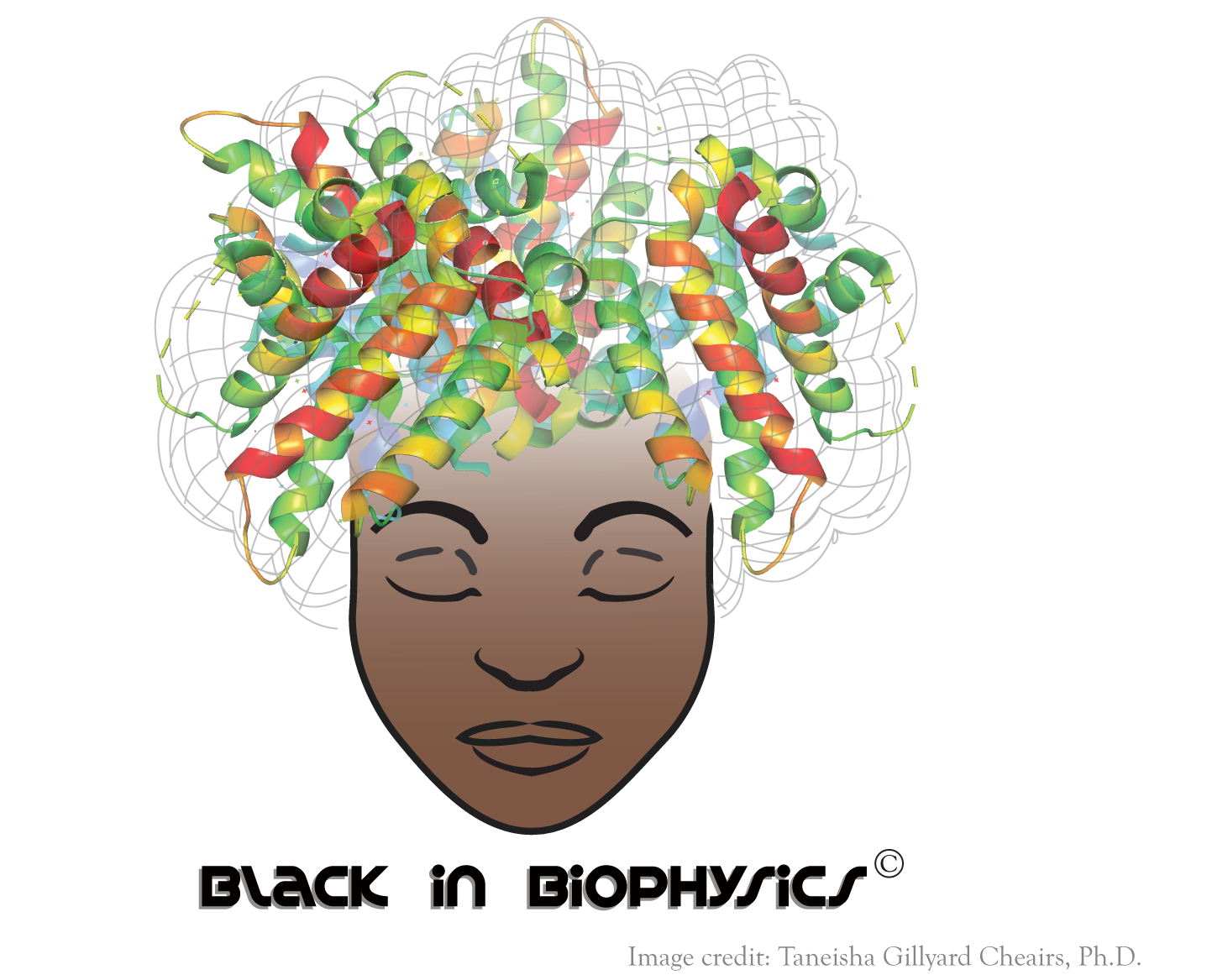
In a short time, a strong sense of community developed among people who may have never met in person, but know a lot more about each other through social media, Davis says. People share grant writing tips, training and job opportunities, and generally celebrate the scientists, their contributions, and career options for the next generation.
The visibility may help change other statistics about Black researchers receiving less NIH funding and being cited less often than their white colleagues, Davis says.
Davis also teamed up with Meharry colleague Jennifer Cunningham-Erves to develop a funded community outreach project to address community concerns about vaccines. He has spoken about the basic science of mRNA at townhall-style community meetings, in person and virtual. The online recordings have reached people from Chicago to New York to Haiti.
The project collaborates with a consortium of more than 90 churches in middle Tennessee and Better Options TN, a community nonprofit organization. To understand concerns, the Meharry team interviewed people in the Southern United States. They developed and organized content on a frequently updated web site, https://yourcovidvaxfacts.com/en.
"We asked about their thoughts about the vaccine and the virus," Davis says. "The biggest one, particularly for Black Americans, was the distrust with government and healthcare. But I was very impressed with some of the questions that the public had. They weren't getting answers, and they wanted answers. If you remember, one of the major issues with people not getting a vaccine was that they thought it would affect their DNA. They just weren't familiar with mRNA."
Davis felt their concerns and trust issues as well. He initially was cautious about being vaccinated himself, waiting to see more data about its safety in people. "Even being a scientist, I was hesitant," he says. "I didn't want to be one of the first," he says. But as he explained the science and helped alleviate concerns of others, he also convinced himself to get the vaccine too.
Meanwhile, back in the lab after the pandemic disruptions, Davis and his team are working to improve health outcomes for populations most at risk, one variant protein and pathway at a time.
Carol Cruzon MortonOther tales
-
![]()
Reshaping Membranes
Melanie Ohi
Published 23 November 2025
![]()
Probing Microbes
Gira Bhabha
Published 30 September 2025
-
![]()
Drawn to the Light
Emina Stojković
Published 30 July 2025
![]()
The Final Phase
George Phillips
Published 31 May 2025
-
![]()
Mind and Muscle
Ryan Hibbs
Published 28 March 2025
![]()
The Shapes of Energy
Luke Chao
Published 12 December 2024
-
![]()
Predicting Proteins
Jens Meiler
Published 25 November 2024
![]()
Death Metal
Steven Damo
Published 28 April 2024
-
![]()
Context Matters
Bing Chen
Published 30 January 2024
![]()
The Crystal Whisperer
Sarah Bowman
Published 29 November 2023
-
![]()
Data in Motion
Nozomi Ando
Published 29 September 2023
![]()
The Monstrous Maw
André Hoelz
Published 28 June 2023
-
![]()
Second Takes
Andrea Thorn
Published 28 February 2023
![]()
Radical reactions
Yvain Nicolet
Published 31 January 2023
-
![]()
Floppy Physics
Eva Nogales
Published 30 November 2022
![]()
Structure of Equity
Jamaine Davis
Published 28 September 2022
-
![]()
Life and Death of a Cell
Evris Gavathiotis
Published 28 July 2022
![]()
Follow the glow
Kurt Krause
Published 29 April 2022
-
![]()
Resolution solutions
Willy Wriggers
Published 25 February 2022
![]()
Of enzymes and membranes
Ming Zhou
Published 28 October 2021
-
![]()
Step-by-step
Gabrielle Rudenko
Published 26 September 2021
![]()
Moving muscle
Montserrat Samso
Published 26 July 2021
-
![]()
Particle catcher
Stefan Raunser
Published 28 June 2021
![]()
Designer drugs
Ho Leung Ng
Published 25 February 2021
-
![]()
Right place, right time
Ernesto Fuentes
Published 29 January 2021
![]()
Shape-shifting secrets of membranes
James Hurley
Published 27 November 2020
-
![]()
Enzymatic action
Cynthia Wolberger
Published 28 September 2020
![]()
Rules of motion
Priyamvada Acharya
Published 31 July 2020
-
![]()
Cosmic Squared
Michael Cianfrocco
Published 27 June 2020
![]()
Kaps are Cool
Yuh Min Chook
Published 28 April 2020
-
![]()
Spiraling into focus
Carsten Sachse
Published 29 March 2020
![]()
Seeing cilia
Alan Brown
Published 27 February 2020
-
![]()
For the Love of EM
Guy Schoehn
Published 27 January 2020
![]()
Protein Puddles
Michael Rosen
Published 16 December 2019
-
![]()
Changing channels
Daniel Minor Jr.
Published 27 September 2019
![]()
Listening Tips
Marcos Sotomayor
Published 30 July 2019
-
![]()
Beyond Cool
Published 31 May 2019
![]()
Hao Wu
A Higher Order
Published 30 May 2019
-
![]()
Aye Aye Captain
Alexandre Bonvin
Published 29 April 2019
![]()
The PARP Family Family
John Pascal
Published 28 February 2019
-
![]()
Frame by frame
Nikolaus Grigorieff
Published 28 January 2019
![]()
Predicting Success
Bil Clemons
Published 18 December 2018
-
![]()
Curiouser and Curiouser
Ramaswamy Subramanian
Published 27 November 2018
![]()
Rely on This
Sjors Scheres
Published 26 October 2018
-
![]()
Proteins out of bounds
Gerhard Wagner
Published 27 September 2018
![]()
Hiding in plain sight
Gaya Amarasinghe
Published 27 July 2018
-
![]()
Jumping Genes
Orsolya Barabas
Published 27 June 2018
![]()
Data Whisperer
Karolin Luger
Published 30 May 2018
-
![]()
Flipping the Switch
Jacqueline Cherfils
Published 27 April 2018
![]()
Tooling Around
Andrew Kruse
Published 29 March 2018
-
![]()
Comings and Goings
Tom Rapoport, Ph.D.
Published 23 February 2018
![]()
Transcriptional Rhythm
Seth Darst
Published 27 January 2018
-
![]()
The Language of Gene Regulation
Daniel Panne
Published 21 November 2017
![]()
Not Your Average Protein
James Fraser
Published 23 October 2017
-
![]()
Message Received
Sebastien Granier
Published 24 August 2017
![]()
Resistance is Futile
Celia Schiffer
Published 28 July 2017
-
![]()
Twist of Fate
Leemor Joshua-Tor
Published 28 June 2017
![]()
Drug Designer
John Buolamwini
Published 30 May 2017
-
![]()
Mathematically Minded
James Holton
Published 28 April 2017
![]()
Garbage Out
Kay Diederichs
Published 30 March 2017
-
![]()
Fixer Upper
Brandt Eichman
Published 27 February 2017
![]()
Mobilizers
Phoebe Rice
Published 31 January 2017
-
![]()
Escape Artist
Katya Heldwein
Published 19 December 2016
![]()
Nature’s Confectioner
Jochen Zimmer
Published 29 November 2016
-
![]()
State of Fusion
Jason McLellan
Published 27 October 2016
![]()
Here Be Dragons
Brian Fox
Published 28 September 2016
-
![]()
SBGrid Assumes Ownership of PyMOLWiki
Published 15 September 2016
![]()
Pharm Team
Oleg Tsodikov
Published 24 August 2016
-
![]()
Spiro-Gyra
Alejandro Buschiazzo
Published 27 July 2016
![]()
Turning the DIALS
Nicholas Sauter
Published 29 June 2016
-
![]()
Pipeline Dreams
Bridget Carragher and Clint Potter
Published 26 April 2016
![]()
U-Store-It
The SBGrid Data Bank provides an affordable and sustainable way to preserve and share structural biology data
Published 28 March 2016
-
![]()
Big Questions, Big Answers
Jennifer Doudna
Published 22 February 2016
![]()
Not a Structural Biologist
Enrico Di Cera
Published 17 December 2015
-
![]()
Divide and Conquer
Kevin Corbett
Published 19 November 2015
![]()
Computing Cellular Clockworks
Klaus Schulten
Published 23 October 2015
-
![]()
Trans-Plant
Gang Dong
Published 26 September 2015
![]()
Keep on Moving
James Berger
Published 23 August 2015
-
![]()
Totally Tubular
Antonina Roll-Mecak
Published 27 July 2015
![]()
From Disorder, Function
Julie Forman-Kay
Published 29 June 2015
-
![]()
Into Alignment
Geoff Barton
Published 27 May 2015
![]()
Two Labs, Many Methods
Michael Sattler
Published 28 April 2015
-
![]()
Picture This
Georgios Skiniotis
Published 20 March 2015
![]()
Intron Intrigue
Navtej Toor
Published 20 February 2015
-
![]()
Cut and Paste
Martin Jinek
Published 28 January 2015
![]()
Basics and Beyond
Qing Fan
Published 18 December 2014
-
![]()
Bloodletting and Other Studies
Pedro José Barbosa Pereira
Published 25 November 2014
![]()
Wire Models, Wired
A brief history of UCSF Chimera
Published 29 October 2014
-
![]()
In Search of…New Drugs
Doug Daniels
Published 30 September 2014
![]()
An Affinity for Affinity…and Corals
John C. Williams
Published 29 August 2014
-
![]()
Pete Meyer, Ph.D.
Research Computing Specialist
Published 22 August 2014
![]()
Justin O'Connor
Sr. System Administrator
Published 20 August 2014
-
![]()
Carol Herre
Software Release Engineer
Published 15 August 2014
![]()
Elizabeth Dougherty
Science Writer
Published 13 August 2014
-
![]()
Andrew Morin, Ph.D.
Policy Research Fellow
Published 11 August 2014
![]()
Jason Key, Ph.D.
Associate Director of Technology and Innovation
Published 8 August 2014
-
![]()
Piotr Sliz, Ph.D.
Principal Investigator, SBGrid
Published 1 August 2014
![]()
New Kid on the Block
James Chen
Published 29 July 2014
-
![]()
Membrane Master
Tamir Gonen
Published 30 June 2014
![]()
The Natural Bridge
Piotr Sliz
Published 13 June 2014
-
![]()
Surprise, Surprise
Catherine Drennan
Published 26 April 2014
![]()
Gone Viral
Olve Peersen
Published 20 March 2014
-
![]()
All Who Wander Are Not Lost
Frank Delaglio
Published 24 February 2014
![]()
The Raw and the Cooked
Graeme Winter
Published 24 January 2014
-
![]()
Vacc-elerator
Peter Kwong
Published 17 December 2013
![]()
Structural Storyteller
Karin Reinisch
Published 15 November 2013
-
![]()
The Fixer
Jane Richardson
Published 28 October 2013
![]()
Inside the Box
Mishtu Dey
Published 17 September 2013
-
![]()
Sensing a Change
Brian Crane
Published 16 August 2013
![]()
Towards Personalized Oncology
Mark Lemmon
Published 16 July 2013
-
![]()
Brush with Fame
Yizhi Jane Tao
Published 14 June 2013
![]()
Toxic Avenger
Borden Lacy
Published 21 May 2013
-
![]()
Pushing the Boundaries
Stephen Harrison
Published 22 April 2013
![]()
Strength in Numbers
Joseph Ho
Published 18 March 2013
-
![]()
One Lab, Many Methods
Wesley Sundquist
Published 12 February 2013
![]()
Unplanned Pioneer
Tim Stevens
Published 15 January 2013
-
![]()
From Actin to Action
Emil Pai
Published 11 January 2013
![]()
Unstructured
A Brief History of CCP4
Published 12 December 2012
-
![]()
Stop, Collaborate and Listen
Eleanor Dodson
Published 5 November 2012
![]()
X-PLORer
Axel Brunger
Published 1 October 2012
-
![]()
Share the Wealth
Zbyszek Otwinowski
Published 22 August 2012
![]()
Unraveling RNA
Anna Pyle
Published 18 July 2012
-
![]()
Sharper Image
Pawel Penczek and SPARX
Published 4 June 2012
![]()
Creative Copy Cat
Pamela Bjorkman
Published 25 April 2012
-
![]()
Charm and Diplomacy
Gerard Kleywegt
Published 7 March 2012
![]()
From Curiosity to Cure
Marc Kvansakul
Published 13 December 2011
-
![]()
The Lure of the Sandbox
Paul Emsley and Coot
Published 15 October 2011
![]()
Springsteen, Tolkien, Protein
Alwyn Jones and Frodo
Published 17 June 2011
-
![]()
Structures Solved Simply
Paul Adams and Tom Terwilliger on Phenix
Published 2 June 2011
![]()
Escape from the Darkroom
Wolfgang Kabsch and XDS
Published 19 May 2011
-
![]()
Playing the Odds
Randy Read and Phaser
Published 19 May 2011
![]()
Crystallography for Kids
Lynne Howell
Published 17 May 2011
-
![]()
Better, Faster, Stronger, More
Victor Lamzin and ARP/wARP
Published 17 May 2011
![]()
Side-Track to Success
Ning Zheng
Published 13 May 2011



